What Should Be Inside A Chicken Coop – Easy Guide!
You’re thinking about backyard chickens. Or getting them soon. Great choice! We’re convinced chickens will be a great addition to your backyard or homestead. Let’s talk about what should be inside a chicken coop and why.
Don’t Be Intimidated By Backyard Chickens!
I’ll never forget the day I setup our first chicken coop in our backyard. It was a mix of many emotions.
First was excitement! It was the start of something new in our lives and we could sense that keeping chickens would be life changing for us.
Second was a bit of apprehension. There was so much unknown for us first time chicken keepers and wannabe homesteaders. It was a big step!
Third was sadness. What spurred on the sudden chicken coop building that day was receiving some difficult news. We were in a season of trying to grow our family and found out that morning we had miscarried our first baby. In our longing to parent something and as a way to cope, Joelle gave me the express task of building our coop!
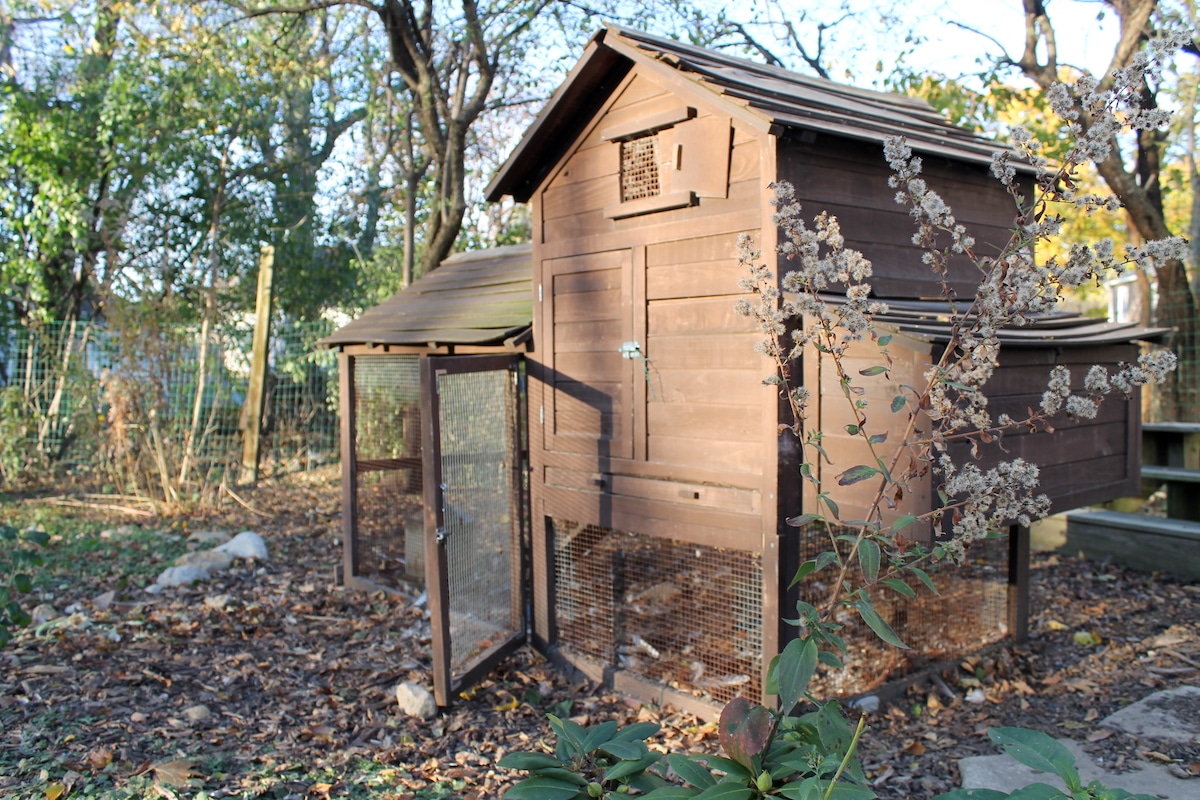
Prior, this kit coop had sat in the box in our garage for quite some time. Even though we had wanted backyard chickens. Even though we specifically moved to an area where we knew backyard chickens were allowed. Getting started still just felt SO intimidating.
But now we were going for it!
There was so much mystery shrouded in these feathery, egg-laying creatures when we started. But, fast forward to today, after a decade or so of chicken keeping, it now all seems like second nature and we couldn’t imagine life without them!
5 Reasons We LOVE Backyard Chickens!
If you’re not yet fully convinced about getting backyard chickens, here are some of the main benefits we’ve seen. And why we say, GO FOR IT!
1. Fresh Eggs!
Growing vegetables is lovely. But having your own source of protein right from your own yard every day is just an incredible feeling! That first time you pop open the laying box and behold a freshly laid egg is simply magical.
2. Chickens Are Calming
Entering the company of chickens is a great way to slow down and channel your inner peace. I call them my therapy chickens! There was nothing more I wanted to do than get home from a long day of work and be outside with the flock.

3. Great For Kids
If you have kids of any age, daily chicken chores are a great way to get them involved. From collecting eggs, to filling up food and water, to helping clean out the coop, kids can gradually take on entry level responsibilities and learn many valuable lessons and skills in the process.
4. Share The Love
Many chicken keepers find themselves with eggs to spare once their gals kick into gear. Selling or giving away a couple dozen eggs a week is a great way to either help your chickens pay for themselves or share the bounty with neighbors and friends.
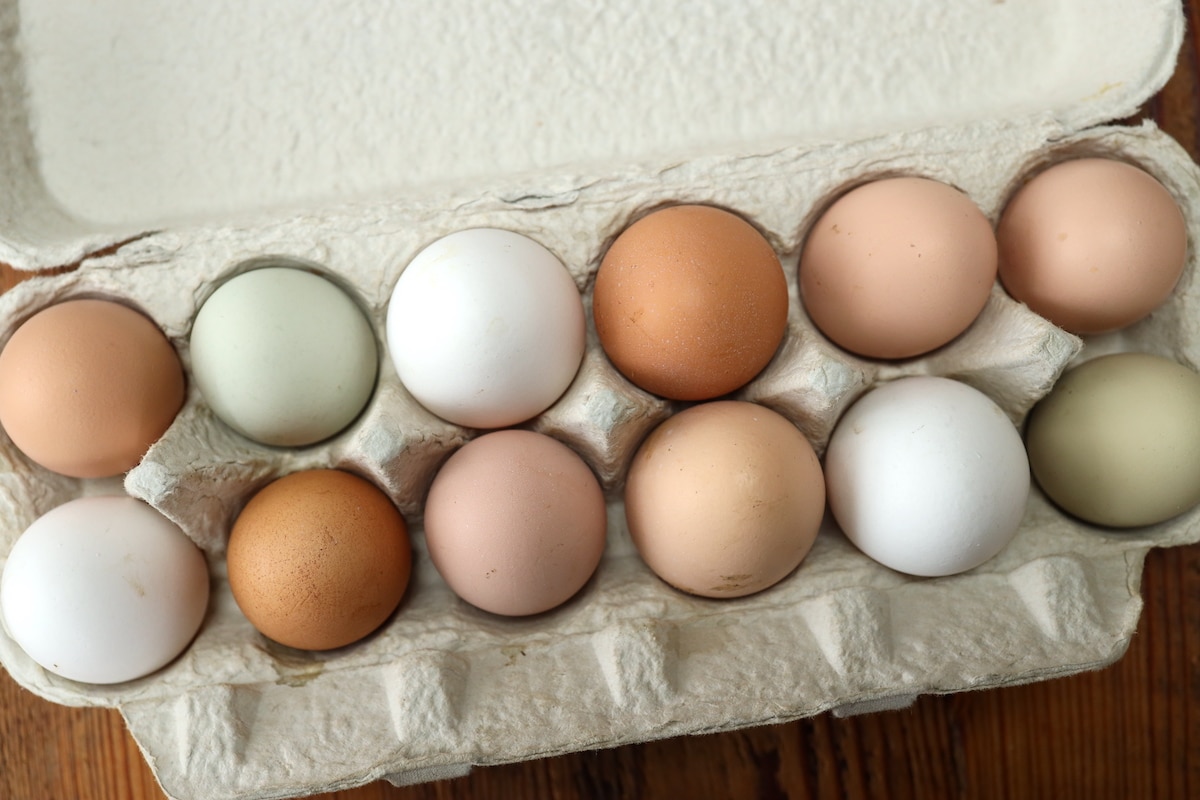
5. They’re Fun!
Your backyard chickens will provide endless entertainment for your whole family! Watching them fight over a freshly plucked worm. Learning their goofy mannerisms and personalities. You’ll laugh. You’ll cry. You’ll keep coming back for more!
What Do I Need To Consider Before Setting Up My Chicken Coop?
We’ll get to what should be inside a chicken coop next. But before you even set up your chicken coop, there are a couple very important things you’ll want to consider.
Predator Proofing
Hands down, the most crucial part of any chicken coop is making sure it is predator proof. And the best time to do this is before you even set your coop in place. The underside of the coop is often the most vulnerable point of entry for predators that can easily dig under. Our post—Predator Proof Chicken Coop Essentials You Need To Know—goes into much more detail. But aside from having secure latches and no large gaps or openings in the coop itself, you’ll likely want to dig out the footprint of the coop and line it with hardware cloth prior to placing your coop.
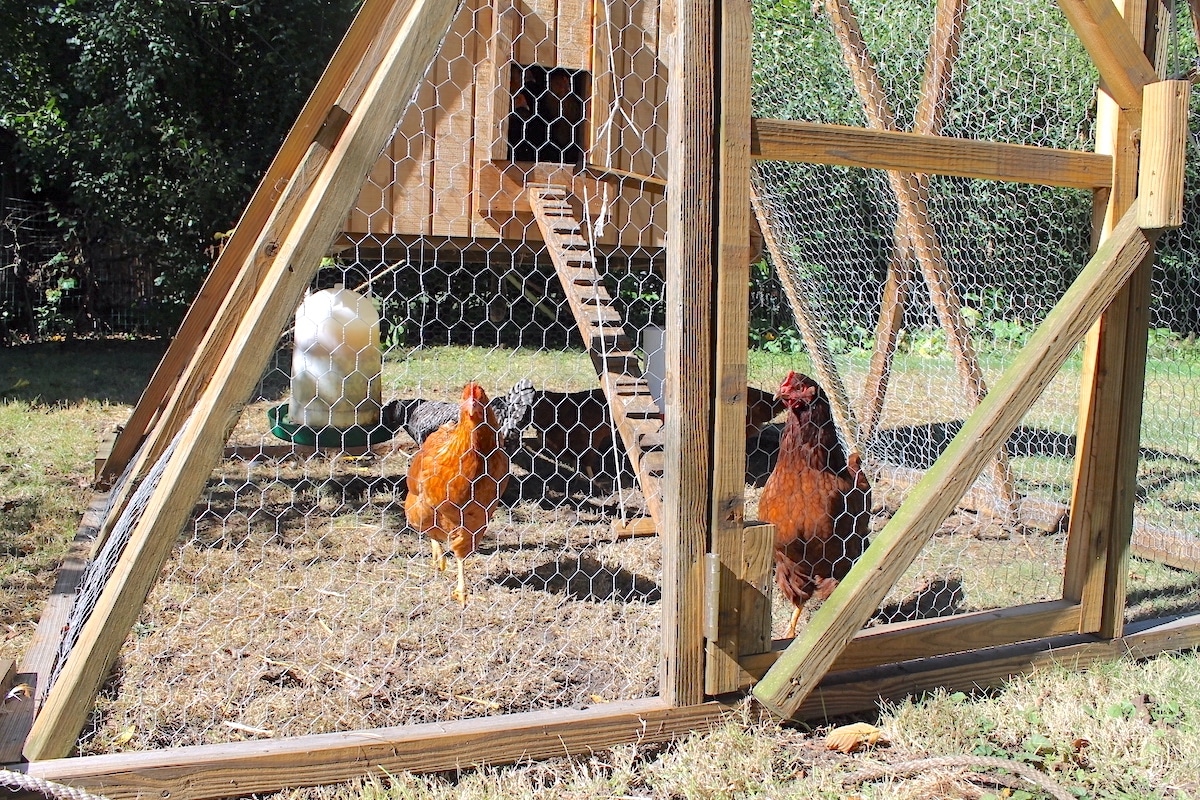
Location
There’s a lot to think through when placing your coop or laying out your homestead. Where and how will I store feed? Do I have a water source nearby to easily refill waterers? Can I place the coop along a hedge of trees or behind a garage that will offer some additional protection from wind and the elements. Are they in a spot I’ll often walk past to regularly check up on things? Once a chicken coop is in place, they can be tricky to move. It’s best to think things through upfront to avoid needing to relocate.
Brooder
More than likely, you’ll be starting with baby chicks and raising them into mature egg laying hens. In this case you’ll need a temporary home for baby chicks, which is called a brooder. Brooders don’t need to be fancy! Our first time raising chicks, we took the box that our coop came from, cut some openings in the top cover, spread wood shavings over the bottom, set it up in our living room, and raised our chicks in there for the first 8 weeks or so before moving them out to our coop.
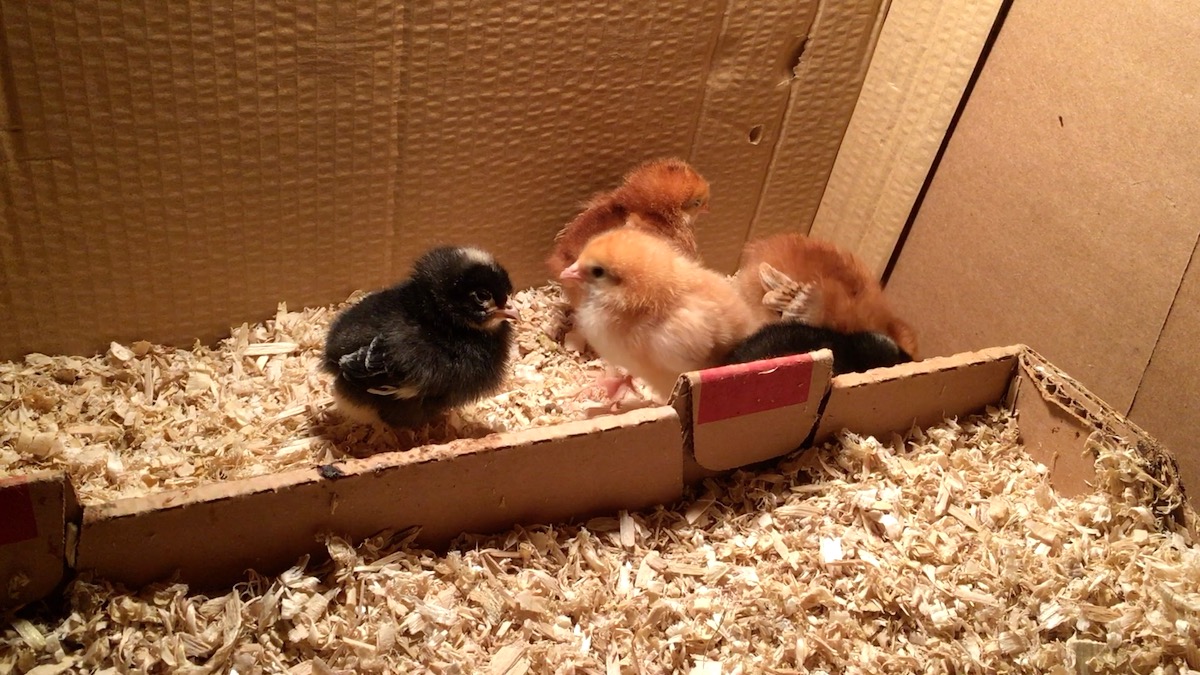
WHAT SHOULD BE INSIDE A CHICKEN COOP?
There’s really no need to overthink a chicken coop. They’re very basic. And most starter coops will come with most of what you need to get going.
That said, here’s our list of the bare essentials every chicken coop needs:
1. Enough Space
You should have at least 4 sq. ft. of space per chicken in your coop. And that is a minimum! This can include both inside space in an enclosed area along with outside space in a run. The run is typically a larger area of the coop that gives your chickens extra space and access to dirt, grass, or other vegetation.
Our first coop had a run of roughly 6’x3’ and an enclosed area of roughly 3’x3’. It said it was suitable for 4-6 chickens. Six chickens always felt snug but doable. When chickens are too cramped they can get stressed resulting in aggression toward each other. To alleviate this, 1) make sure to not overpopulate your coop, 2) consider supervised or regular opportunities to free range outside the coop, or 3) build a larger run onto your coop.
2. Food & Water
A chicken feeder holds and dispenses chicken feed and a waterer holds and dispenses water. There’s a variety of styles for both. We’ve found it easiest to just stick with the most basic options, especially when starting out.
We use this feeder, which can hang or sit on the ground. And we’ve landed on using this waterer after trying a few. As much as we like to avoid plastic for holding water, we’ve found the galvanized models rust out after just a year or two. The plastic waterers have held up well for us and been easy to clean.
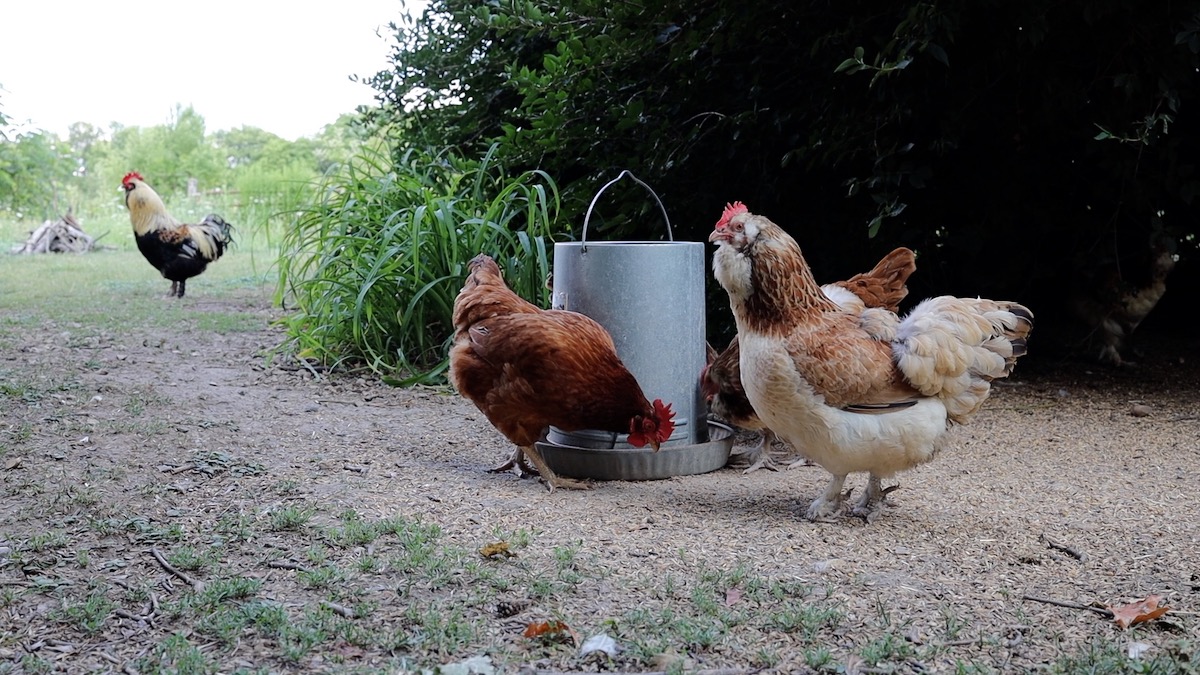
When it comes to feed, just like in the aisles of a grocery store, there can be many options. The price usually reflects the quality. You’ll pay more for organic versus conventional. You may pay more for the soy-free feed that utilizes an alternate protein source. Have someone at your local feed or farm store break down the options and go with the one that best aligns with your values.
Usually, chicks will eat a starter feed during their first few weeks of life, then switch to a grower feed, then transition to a layer feed around the time they start laying eggs. The difference being the protein content in each mix.
There’s nothing special about the water your chickens need. We just use a hose to fill up waterers. What’s important is making sure they always have enough water and that you keep it clean. They tend to kick dirt into their waterer or even poop in it. Consider raising it up a bit on blocks or by hanging and make sure to clean it regularly.
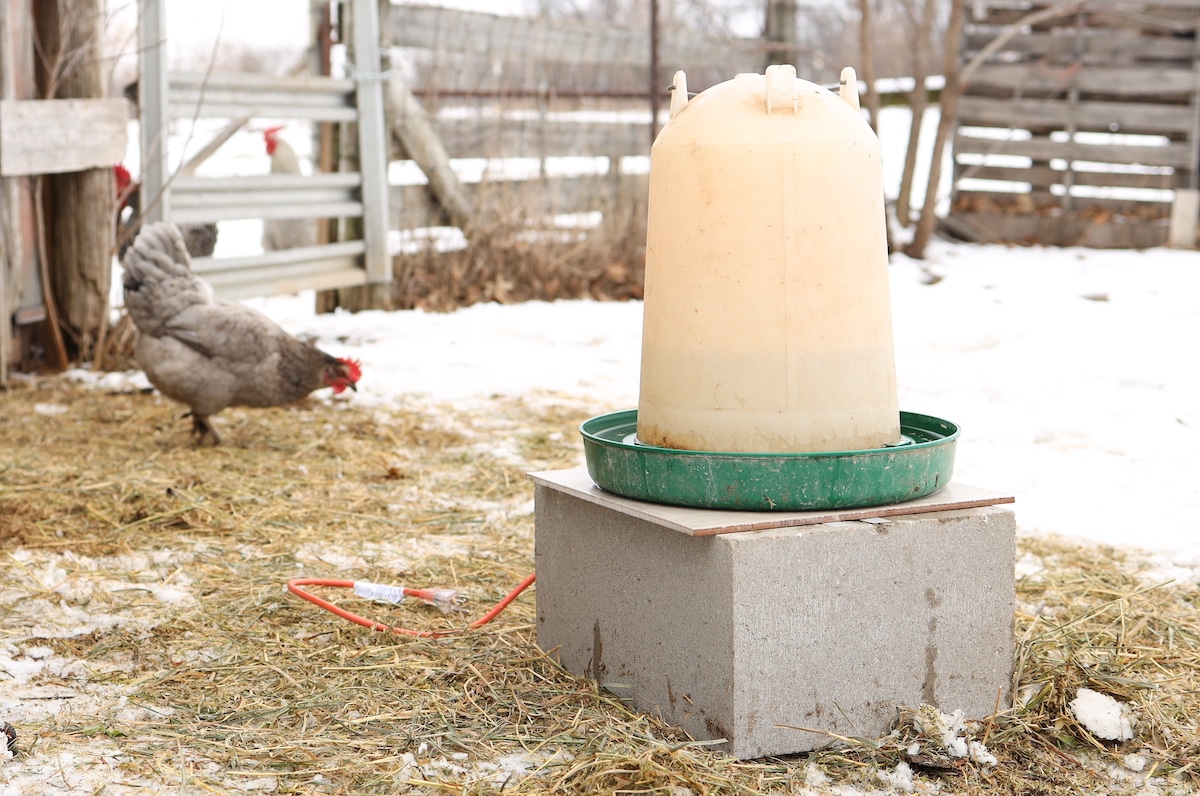
3. Roosting Bars
After a full day of pecking and scratching, your chickens will seek a spot that is high and safe to perch for the night. This is the roost where chickens sleep.
Roosting bars can be round or flat. Typically about a 2” wide bar is preferred, but they can be wider. Chickens seek higher ground at night where they’re least susceptible to predator attacks. So, the roost should be raised off the ground and will most likely be located in the enclosed area of the coop. You want to make sure there is enough space on your roosting bars for all of your chickens to fit. And you want enough space between the bars so they are not competing for space.
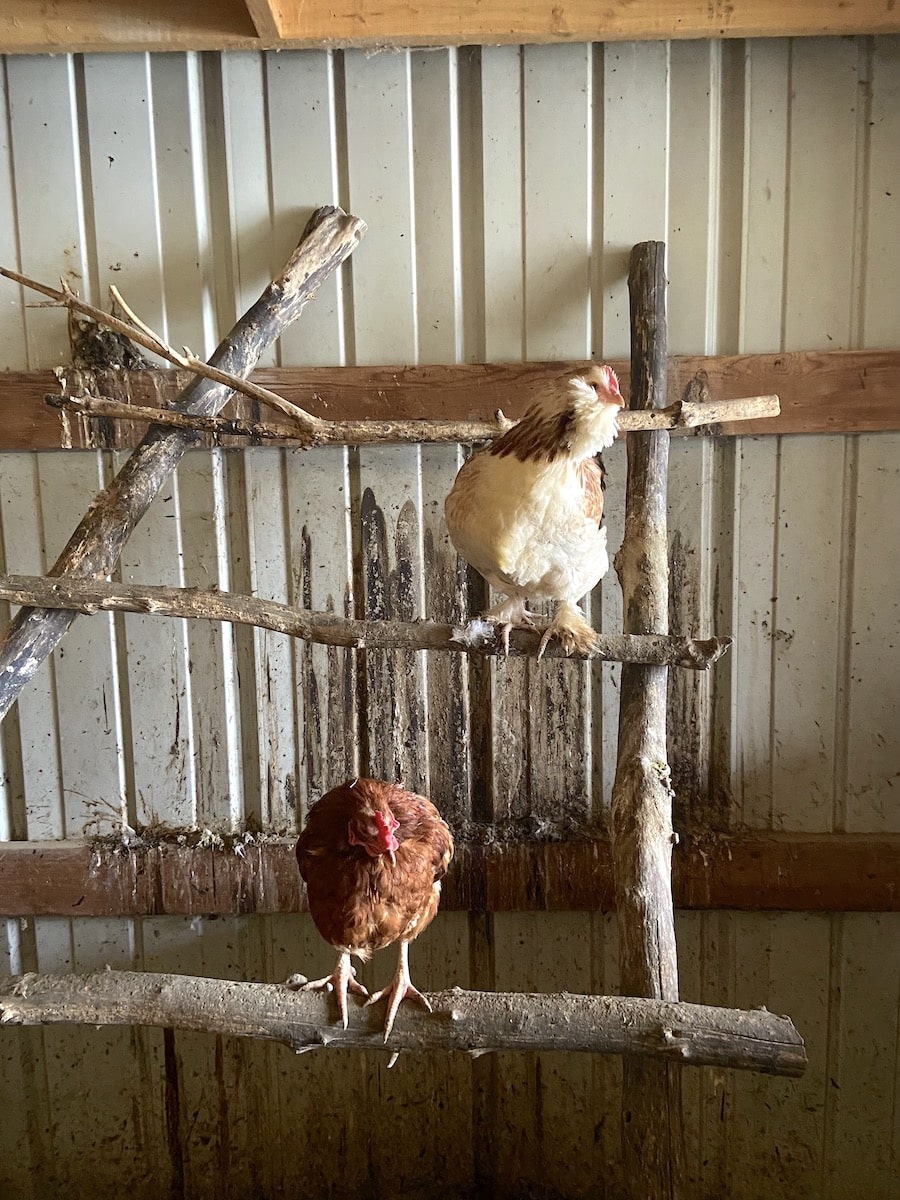
Many smaller coops have multiple horizontal roosting bars all on the same plane. You can also build a ladder style roost that rests at about a 45° angle. You just want to make sure there is ample space between the ladder rungs to keep chickens from pooping on each other!
4. Enclosure
A fully enclosed area of your coop is a must! A solid roof and walls serve as a shelter from the elements like rain storms, snow, or freezing temps. This space is also where the laying boxes are typically located providing your chickens with a bit more privacy than the open run. Plus, an enclosure gives you the option to lock up your chickens securely at night so nothing can get to them.
As a general rule of thumb, make sure the enclosed area has no gaps or openings larger than 1/2”. This area will also typically have a door for entry that can be opened or closed. Your best bet is to install a 2-step latch, such as a barrel or spring latch, on the door so no animal can open it up.
5. Dry Bedding
Especially in the enclosure, and sometimes in the run, you’ll want to make sure your chickens have clean and dry bedding in place. This is where poop collects in the coop and moisture is collected to keep your coop dry. Excess moisture and unsanitary conditions in the coop could lead to disease or sickness among your flock.

Some of the most common bedding materials are wood shavings, straw, or wood chips. Start with a thin 1″ or 2” layer down. You can always add multiple fresh layers of bedding on top as it gets saturated. Cleaning your coop and replacing fresh bedding is a necessary part of chicken keeping. Many coops have removable trays that can slide out and be easily dumped. Otherwise, you’ll need to get in there with a shovel or scooper to remove the old bedding.
You’ll want to clean your coop at least once a month, or more as needed. The winter especially may call for more frequent cleanings or bedding applications as excess moisture can lead to frostbite for your chickens.
6. Airflow
Every coop should have proper ventilation for fresh air. A common design mistake in coops is not building in some sort of opening in the enclosed area that can be opened or closed to allow for airflow. That opening should be lined with hardware cloth to prevent predators from entering through it.
In summertime, the enclosed area of your coop can get especially stuffy and hot. Opening your ventilation can help provide some relief and fresh air for your chickens. When winter sets in, you’ll likely be finding yourself closing up that ventilation to try and trap in heat. The key is to monitor your chickens and the weather and be regularly adjusting your ventilation to suit their needs.
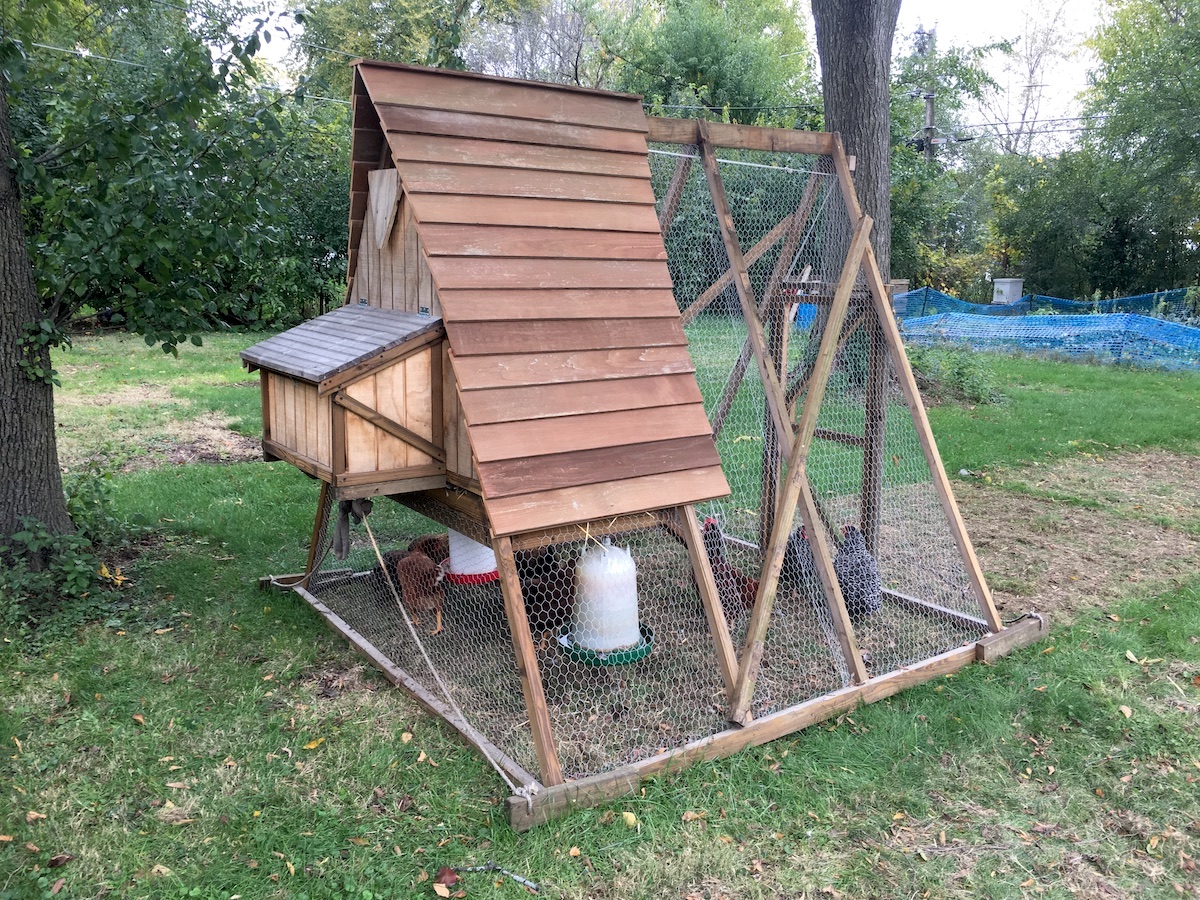
7. Laying Boxes
Laying boxes, or nesting boxes, will become a coveted space in your coop once your chickens are producing eggs. These roughly 1’x1’x1’ cubes are commonly located off the enclosed area of your coop with a hinged top cover that allows the chicken keeper easy access to collect eggs. A general rule of thumb is 1 laying box per 4 chickens. But you want 2 boxes minimum in your coop to ease up bottlenecks.
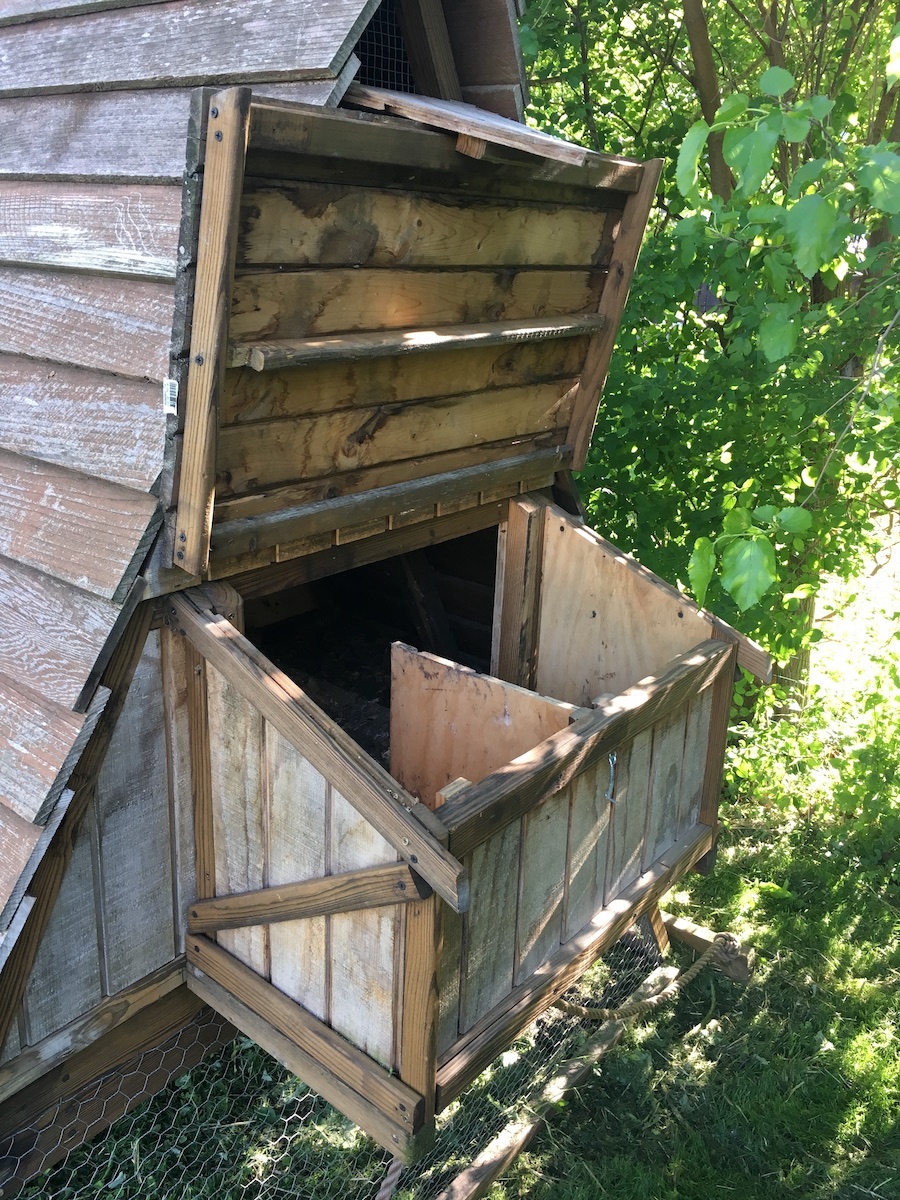
Laying boxes usually are lined with a soft bedding on bottom, are dark, and offer privacy. They are also a place to keep clean regularly as poop and sometimes broken eggs can dirty things up. The cleaner your laying boxes, the cleaner your eggs!
And you may not want to set your expectations that your chickens will lay eggs in the laying boxes every time. Some might. But others will throw you for a loop and lay elsewhere. You might find eggs in the run. Or, if your chickens free range, keep an eye out around the yard as chickens may very well start laying in another cozy, secluded looking spot.
8. Chickens!
Yes, your chicken coop will have chickens! We’ve had over 10 different chicken breeds over the years and haven’t found a bad one yet. Do some research, don’t overthink it, and get some chickens that strike your fancy!
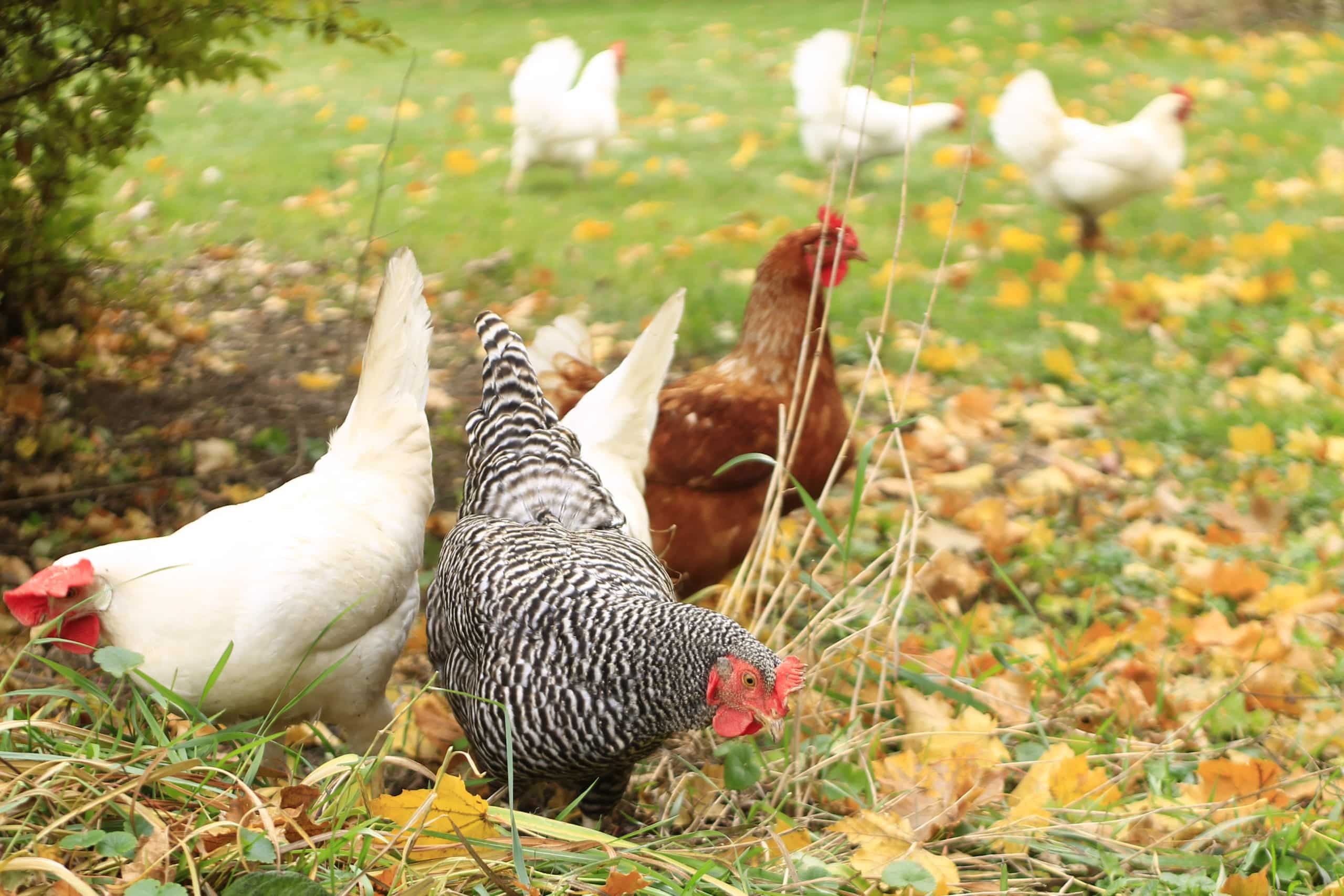
Your location, climate, and preferences can impact your decision. For instance, some chicken breeds are better suited for colder temps while others are better suited for warmer temps. Some are more proficient free rangers than others if you plan to let them loose in your yard. And some are better egg layers if you’re looking for the best bang for your buck.
There are chicken breeds that are labeled as being more aggressive than others. However, we’ve found that if you raise them with kindness then they’ll most likely return kindness to you and each other. Yes, you’ll see the pecking order play out in the coop, which can seem nasty at times. This is instinctual for chickens and part of their social nature.
Regardless of what breed or breeds you get, you’ll grow to love your chickens unique personalities and enjoy the eggs they give you!
What Else Could Chickens Need Beyond the Basics?
We just covered the basics of the chicken coop—the minimum needed to get you up and running with backyard chickens. But, as you go, you may find your chickens have some additional needs.
Calcium
Chickens rely 100% on their diet for their calcium. And, as calcium is one of the main building blocks of eggshells, hens require a good amount of calcium intake for egg production. A typical feed, and even free range diet, will likely not provide enough calcium for chickens. A lack of calcium in the diet can result in soft egg shells or even longer term issues like weakened bones.
To get calcium into your chickens diet, there are two great options: oyster shells and eggshells. Most feed stores with chicken supplies will have bags of oyster shells. These are affordable and offer a great source of calcium. The grit they provide can also aid in a chickens digestion. Saving and recycling your chickens egg shells is another great way (and free way!) to add calcium into your chickens diet. Simply save the egg shells after consuming eggs, crush them into small pieces, and give them back to your chickens. Whether using oyster shells or eggshells, it important you give them to your chickens free choice. Don’t mix them into their feed.
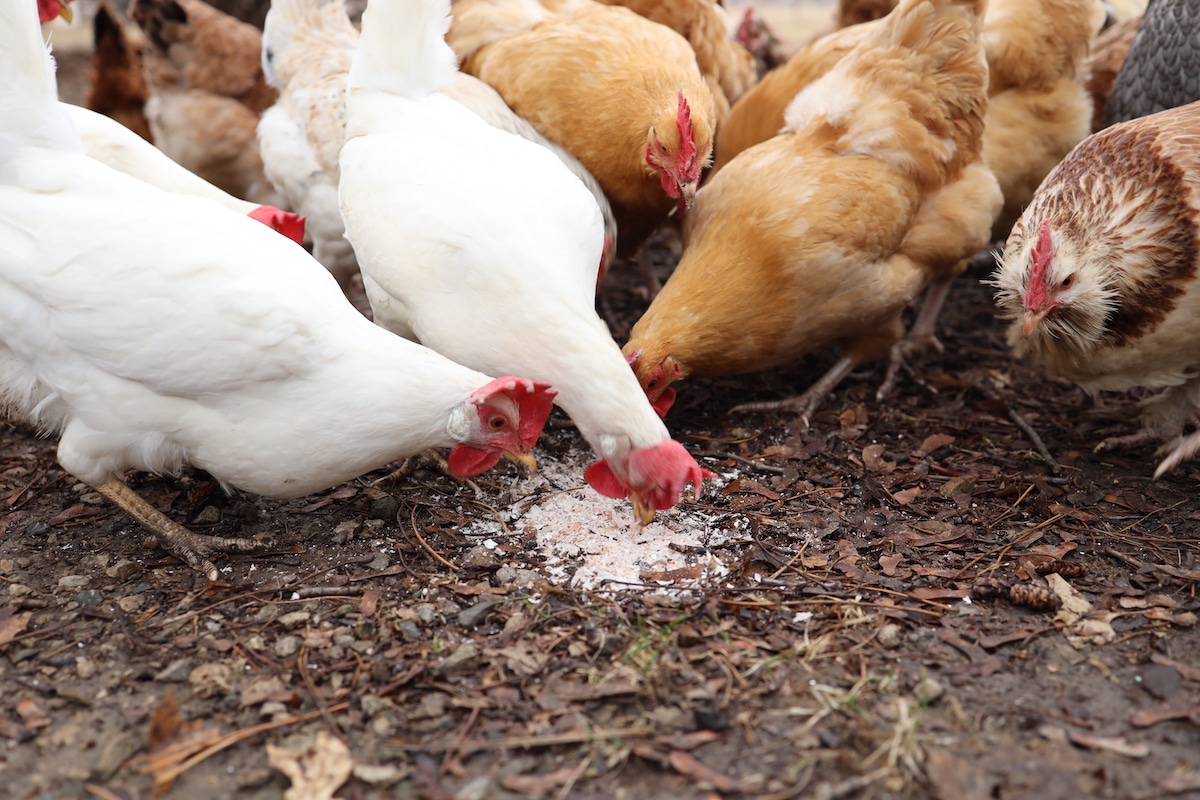
Electrolytes and Minerals
Adding a splash of apple cider vinegar to your chickens water can help provide some much needed electrolytes and healthy gut bacteria. We’ve found this to be especially true when raising baby chicks to get them off to a strong start. The same is true for salt. We’ll often sprinkle Redmond Real Sea Salt into our chickens water for added electrolytes and minerals.
Additional Protein
When chickens are free ranging, they get a protein boost from the bugs, worms, and plants they have access to. Protein is vital for healthy egg production and other functions like feather growth. So, especially if your chickens are not free ranging, you may consider a supplemental protein source. Or, we like to give our chickens extra protein in the winter when there’s not much out for them to forage. Meal worms or black soldier fly larvae are two common protein options. Give them a sprinkle every now and again and your chickens will think it’s Christmas every time!

Care and Attention
In the end, your chicken coop is only as good as you—the chicken keeper! You need to be the one refilling feed, keeping fresh water topped off, cleaning things up, and making sure your chicken’s housing adapts with the changing seasons.
Issues can, and likely will, pop up. We’ve dealt with a chicken with a prolapsed vent. Chickens get wounds and require medical attention. The key is take a bit of time each day to observe. That way, when needs or issues do arise, you can respond quickly and take care of things in the coop right away.
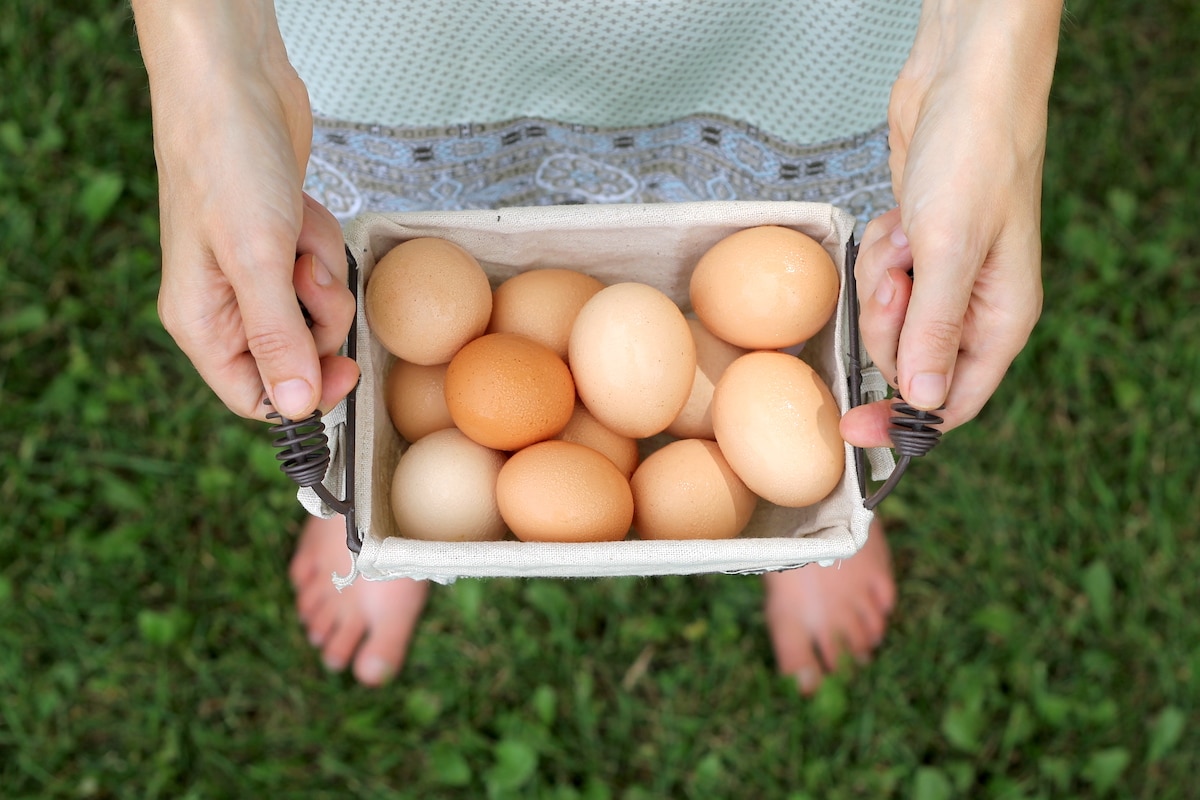
Overall, we’ve found that chickens really can be pretty hands off. Keep their basic needs met by making sure they have the right space, and the right things within that space, and your chickens will be happy, healthy, and reward you with so much in return!
Some of the above links are affiliate links. This means we earn a small commission on qualifying purchases at no cost to you. We are so appreciative of your support!
More Posts on Backyard Chickens:
- Custom A-Frame Chicken Tractor For (Almost) Free
- Predator Proof Chicken Coop Essentials You Need To Know
- Easy DIY Heated Chicken Waterer
- Chicken Roost Designs | Two Simple DIY Ladder Perch Ideas
- How To Care For Chickens In The Winter Basics
- Simple Outdoor Chicken Brooder Ideas
- How To Care For Baby Chicks
- Feeding Chickens Egg Shells (Why, When, & How)
- Simple DIY Chicken Coop Inside Your Barn
Pin it for later!




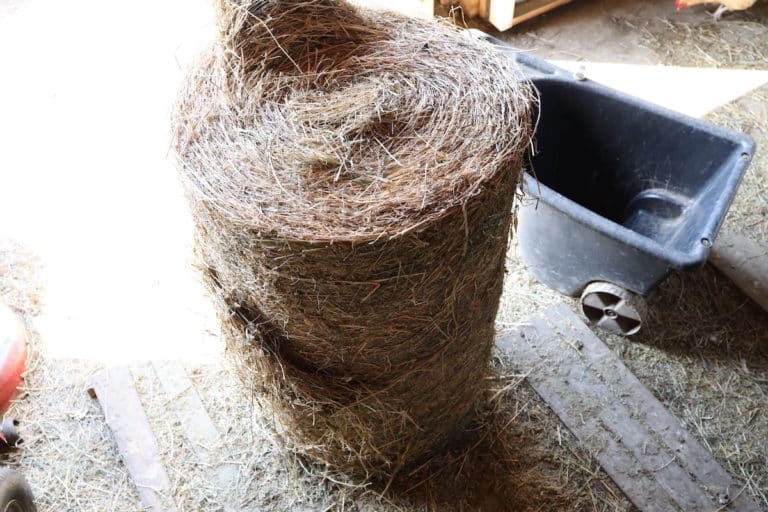
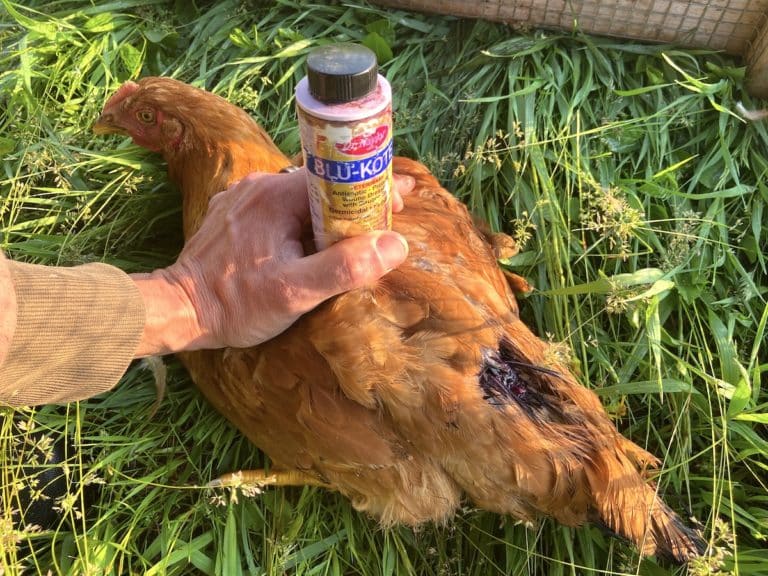
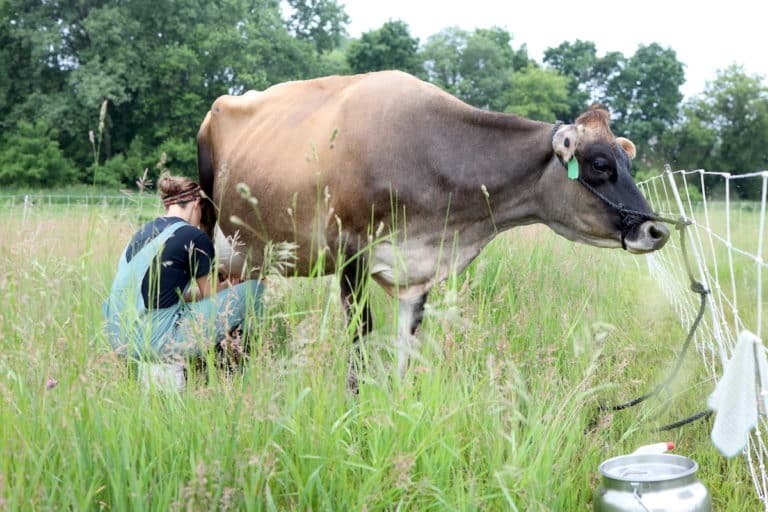
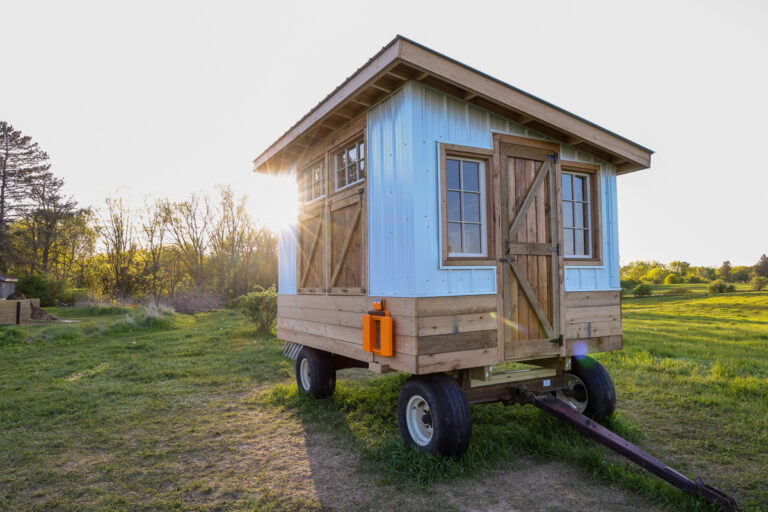
Enjoyed your article, great overview! Delighted to see your Salmon faverolle chickens, they are one of my all time favorites. Would love for homesteaders to consider them more often. Thank you for what you’re doing.
Thanks! This is our first time with the salmon faverolles and we’re fans too! They’re such quirky little creatures 🙂
The background noise made it hard to watch for me – like someone was shredding paper or something.
Sorry the video was hard to watch. Our neighbors were doing work across the street. We do our best 🙂
You might add some info as to what to do if one of your chickens/hens turns into a rooster
We only have three: Betty, Gracie, Peaches… Peaches turned out to be big foot and a guy
Hi! That is a great idea! And definitely something that pops up commonly among chicken keepers. I’m in a couple local FB chicken keeper groups and I know people commonly post roosters on there that they need to re-home. Unfortunately, I don’t know that many are willing to trade a hen for a rooster since it’s not generally viewed as an equal trade. You might be able to find someone selling pullets around the age of your other hens to replace big foot with. When we lived in the suburbs we found a farm nearby that was happy to take in extra roosters when we had this pop up. Hope that helps! Love the names by the way!